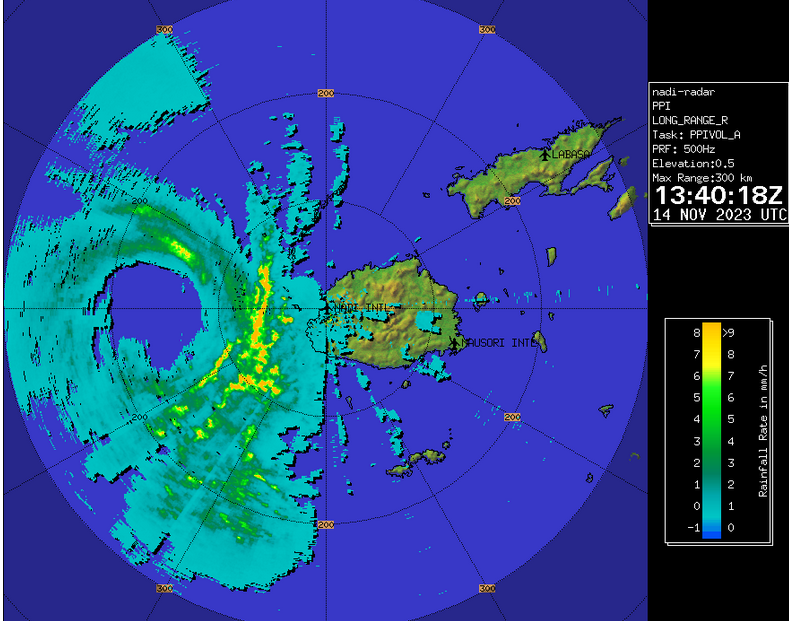The center of Tropical Cyclone Mal passed just to the west of Fiji on Tuesday morning. At 10:00 a.m. EST on Tuesday the center of Tropical Cyclone Mal was located at latitude 17.8°S and longitude 175.9°E which put it about 125 miles (200 km) west of Nadi, Fiji. Mal was moving toward the south-southeast at 14 m.p.h. (22 km/h). The maximum sustained wind speed was 75 m.p.h. (120 km/h) and there were wind gusts to 90 m.p.h. (145 km/h). The minimum surface pressure was 983 mb.

Radar from the Fiji Meteorological Service showed the center of Tropical Cyclone Mal passing just to the west of Viti Levu on Tuesday morning. A weather station at the airport in Nadi (NFFN) reported a sustained wind speed of 41 m.p.h. (66 km/h) and a wind gust of 63 m.p.h. (102 km/h).
Tropical Cyclone Mal was the equivalent of a hurricane/typhoon when it passed just to the west of Fiji on Tuesday morning. A circular eye with a diameter of 50 miles (80 km) was at the center of Mal’s circulation. The eye was surrounded by a ring of thunderstorms and the strongest winds were occurring in that ring of storms. Bands of showers and thunderstorms were revolving around the core of Tropical Cyclone Mal. Storms near the core generated upper level divergence that pumped mass away to the southeast of the tropical cyclone.
Winds to hurricane/typhoon force extended out 40 miles (65 km) from the center of Tropical Cyclone Mal. Winds to tropical storm force extended out 155 miles (250 km) from the center of Mal’s circulation.
Tropical Cyclone Mal will move into an environment that will become unfavorable for intensification during the next 24 hours. Mal will move over water where the Sea Surface Temperatures are near 26°C. It will move under the eastern side of an upper level trough over the Coral Sea. The upper level trough will produce northwesterly winds that will blow toward the top of Mal’s circulation. Those winds will cause moderate vertical wind shear. The combination of cooler water and moderate vertical wind shear will cause Tropical Cyclone Mal to start to weaken during the next 24 hours.
The upper level trough over the Coral Sea will steer Tropical Cyclone Mal toward the south-southeast during the next 24 hours. On its anticipated track, Tropical Cyclone Mal will move south of Fiji.
The eastern side of the eyewall of Tropical Cyclone Mal could pass close to the west coast of Viti Levu. A rainband on the eastern side of Mal’s circulation could bring strong winds and heavy rain to the western part of Viti Levu. Scattered electricity outages are possible. Locally heavy rain could cause flash floods in some locations. Tropical Cyclone Mal could cause a storm surge of up to 7 feet (2 meters) along parts of the northern and western coasts of Viti Levu. Mal could also bring gusty winds and heavy rain to Kadavu and Ono.
